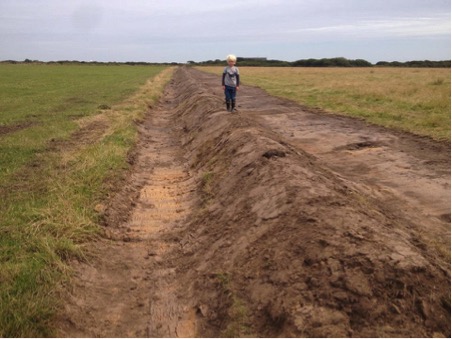 Predannack Cliffs and Teneriffe Farm on the west coast of the Lizard are an extremely diverse historic landscape. There is the coastal grassland and heathland of the National Nature Reserve, and the ancient and unchanged coastal fields where the boundaries have always remain untouched. And then there are the slightly inland fields, which are a little more productive, and the arable fields of Teneriffe. Every field is different. Stone hedging forms the boundaries, some is ancient and some not quite so old.
Predannack Cliffs and Teneriffe Farm on the west coast of the Lizard are an extremely diverse historic landscape. There is the coastal grassland and heathland of the National Nature Reserve, and the ancient and unchanged coastal fields where the boundaries have always remain untouched. And then there are the slightly inland fields, which are a little more productive, and the arable fields of Teneriffe. Every field is different. Stone hedging forms the boundaries, some is ancient and some not quite so old.
These stone boundaries were positioned not just by whim but providing a purpose, and not just to contain livestock or use up stone picked from that field. The very nature of each field changes by each hedge line. Many a boundary hedge ripped out in the mid 1900s accurately marked the change in soil types. Very often a valley bottom or stream denotes a total change. For example; one side may be shale over heavy clay, to the otherside being free draining fertile loam, with only a few metres between.
As each field changes with each boundary the management for that field must change with it. Difficulty then arises following the past demolition of perhaps two or three or more hedges creating one large field, which makes cost effective easy working for large modern machinery. During the cultivation of one field part of Teneriffe we worked deep dark fertile soft loam, areas thick with stone, pure clay almost unworkable, and shallow top soil with no stone, all in ten acres. Once this would have most likely been six or more fields, and in effect it still is many fields. No wonder then that commercially farmedfields are plotted and sampled and farmed using sat nav, inputs adjusted depending on each part of each field.
Here at Teneriffe we have redefined some of the old boundaries. Rebuilding this amount of stone hedge is almost impossible today, but by creating a mound of earth we have brought the old boundary back to life. Fencing and the planting of indigenous hedging plants will follow. By investing in the natural growth of native species not only has a historical part of the landscape been restored, but in time, as with all hedges, hopefully they will become a great resource for wildlife, not to mention facilitating somewhat easier management.
Published: Jan 2016
Author: William Watson (Tenant farmer)
